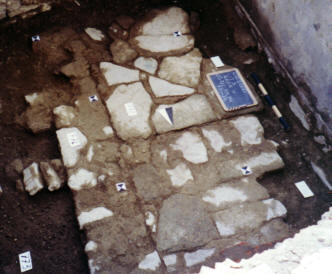| The | bottoms of the trenches alongside the Manica Lunga revealed a very complex topology. We removed one floor to find another beneath it. We removed that floor to find older walls below. These walls passed beneath the later walls. In excavating, deeper is generally older, and how walls and floors join up is a puzzle for the archaeologist to solve. The sample photographs presented here show only a small portion of the complexity we found. |
| The photo below shows an older wall below a flagstone floor. Note that it is placed at a very different angle from the later wall on the right side of the trench. The photo at right in another trench shows two crossing walls found after removal of a floor. Notice the clear line on the mortar wall at the top of that photo, indicating the level of the later tile floor. | 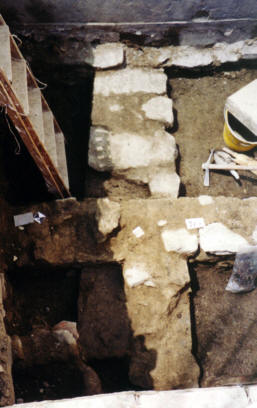
|
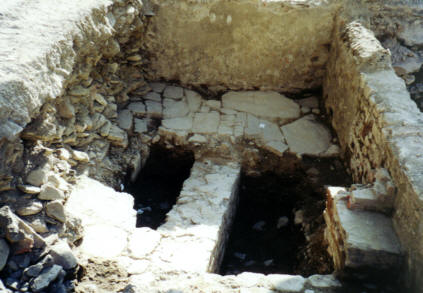 |
| The view at
right is the same trench shown above, right from a different angle.
The two walls are visible as are a number of other features. Notice
that the wall that runs from left to right looks to pass under that
running from top to bottom and appears to end before it reaches the
newer mortar wall on the right edge.
The photos below were taken earlier in the same trench. The first, on the left, shows the complete tile floor. Just below that we found the flagstone floor seen below, right. This was at the same level as a similar flagstone floor in an adjoining trench, although these were separated by a wall. Notice that the flagstone floor is not homogeneous, but includes a wall on the left side that was brought to the floor level before installation of the tiles. |
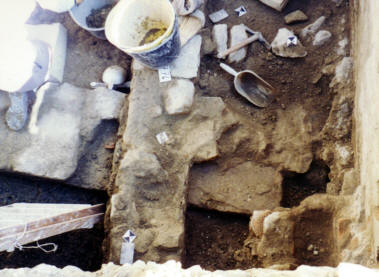
|
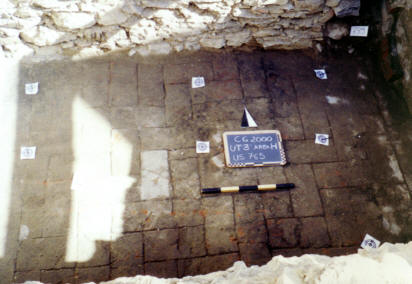
|
|
| Examination
of the photo on the right, above, shows the seam from the tile floor in
the mortar wall, and what is possibly another wall indicated by the line
running left to right across the center of the picture toward the mortar
wall. This interpretation is supported by small feature on the left
side in the deeper excavated area. The small black and white
triangle indicates north in both photos.
It is interesting that in the several adjoining trenches we found no ceramics "outside" a wall that ran diagonally through them. Below a certain level, "inside" this wall we found thousands of fragments. Anna, one of the Principal Investigators, proposed an appealing theory: During ceramics production, kiln wasters and other refuse were thrown into the stream that ran just outside. Later, when these rooms were filled during renovations or new construction, the fill material was dug from the stream bottom, which was of course rich with ceramics sherds. |
This page and its contents
© Copyright 2001 Michael & Karen Crisafulli. All rights reserved.
